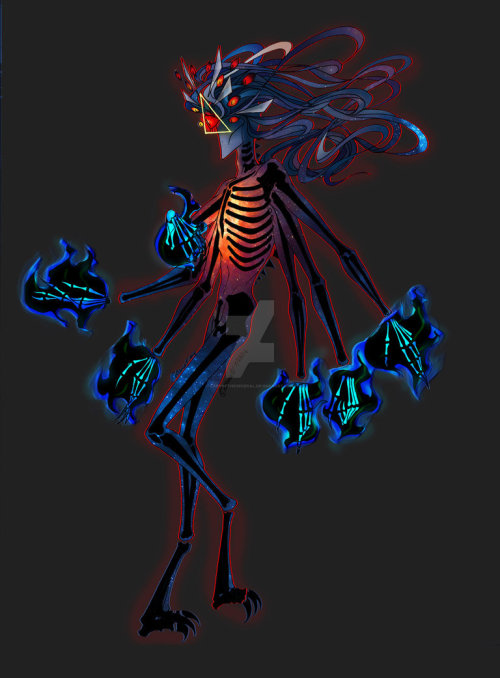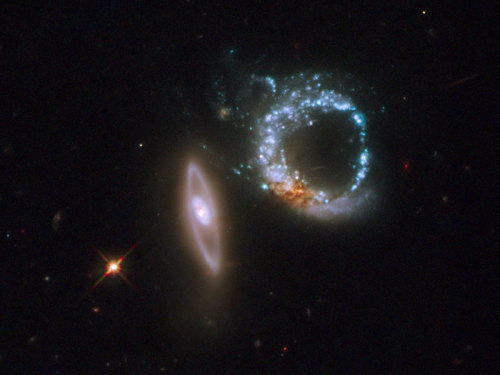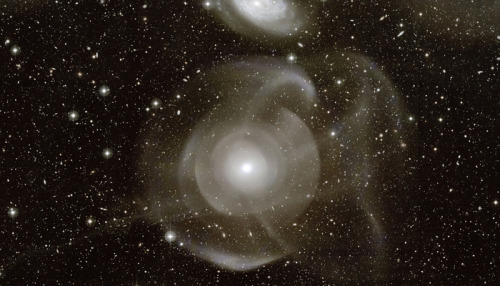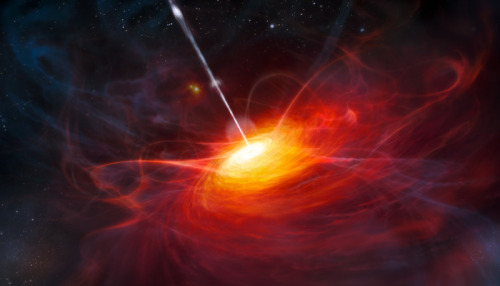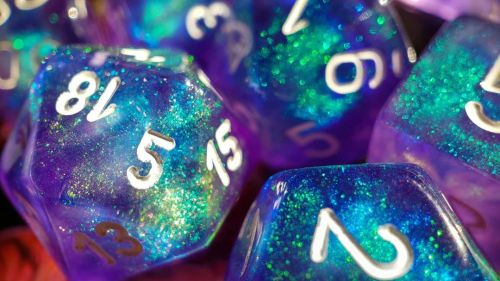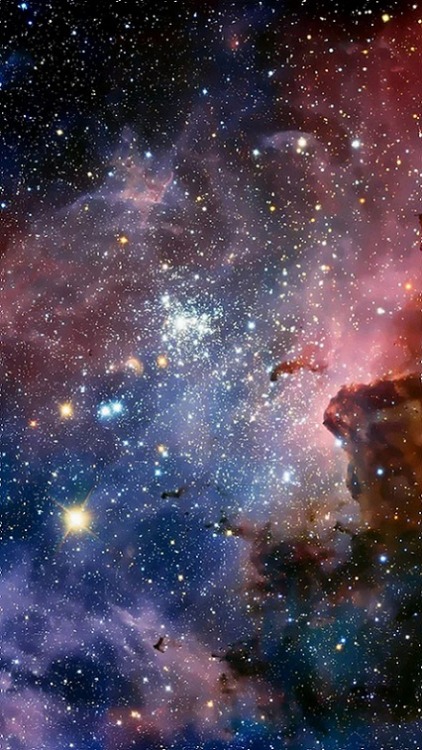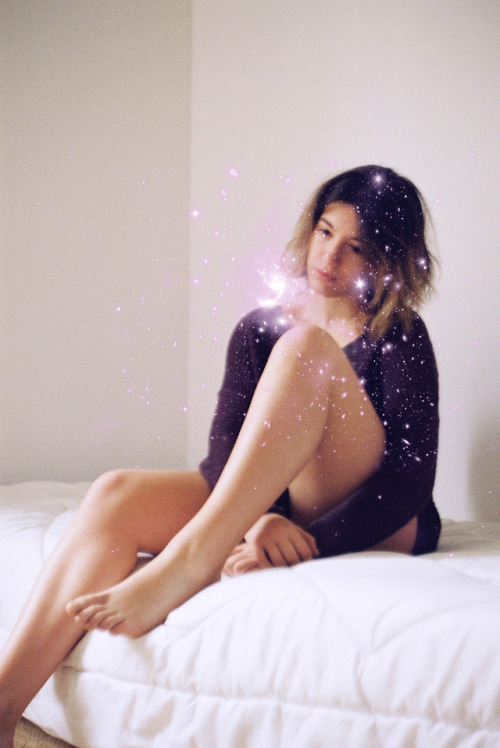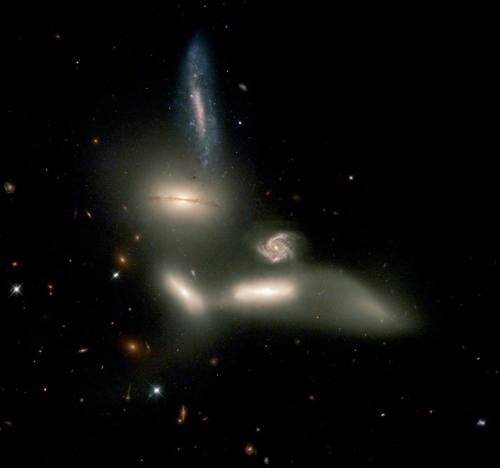#galaxies










The Milky Way Might Never Become An Elliptical Galaxy
“We will continue to slowly form new stars for many trillions of years. Our Local Group won’t become “red and dead” for many times the present age of the Universe. And, perhaps most importantly, we’ll still have a Milky Way-like feature in the night sky of whatever planets are around in the far future. There may come a day where our spiral features are no more. But since the turn of the century, we’ve learned that day won’t come when the Milky Way and Andromeda merge, but rather much farther out into the distant future.”
In about 4 billion years, the Milky Way and Andromeda will merge. Gravitational interactions will trigger the collapse of gas, new stars will form, stellar winds will blow, gas will get ejected, stars will be gravitationally disrupted, and our galaxy will transition from a spiral to an elliptical. Devoid of gas, our post-merger galaxy, now named Milkdromeda, will become what’s known as “red and dead.”
Laniakea: Our Home Supercluster of Galaxies | APOD
It is not only one of the largest structures known – it is our home. The just-identified Laniakea Supercluster of galaxies contains thousands of galaxies that includes our Milky Way Galaxy, the Local Group of galaxies, and the entire nearby Virgo Cluster of Galaxies. The colossal supercluster is shown in the above computer-generated visualization, where green areas are rich with white-dot galaxies and white lines indicate motion towards the supercluster center. An outline of Laniakea is given in orange, while the blue dot shows our location. Outside the orange line, galaxies flow into other galactic concentrations. The Laniakea Supercluster spans about 500 million light years and contains about 100,000 times the mass of our Milky Way Galaxy. The discoverers of Laniakea gave it a name that means “immense heaven” in Hawaiian.
Post link
Ring galaxies are thought to be the result of a collision between two galaxies of different sizes. When a smaller galaxy passes through the disk of a larger one, the increased gravitational interaction condenses the gas and dust clouds at the center of the galaxy and creates a “shock wave” that sends star forming regions away from the point of collision. In the case of the galaxy system Arp 147, two separate ring galaxies were created in the collision.
Credit: M Livio et al. (STScI), ESA, NASAFor more astronomy, check out AstronomyForAmateurs.com
Post link
Galaxy NGC 474: Shells and Star Streams (desktop/laptop)
Click the image to download the correct size for your desktop or laptop in high resolution
Post link
Supernova Seen In Two Lights (desktop/laptop)
Click the image to download the correct size for your desktop or laptop in high resolution
Post link
Andromeda Galaxy (desktop/laptop)
Click the image to download the correct size for your desktop or laptop in high resolution
Post link
Stars and Dust in Corona Australis (desktop/laptop)
Click the image to download the correct size for your desktop or laptop in high resolution
Post link
A Quasar (desktop/laptop)
Click the image to download the correct size for your desktop or laptop in high resolution
Post link
Centaurus A (desktop/laptop)
Click the image to download the correct size for your desktop or laptop in high resolution
Post link
Dark Matter Did Not Dominate Early Galaxies
A new study finds the mysterious substance was at most a minor constituent of large galaxies in the early universe
Although the invisible substance known as dark matter dominates galaxies nowadays, it was apparently only a minor ingredient of galaxies in the early universe, a new study finds.
This new finding sheds light on how galaxies and their mysterious “haloes” of dark matter have changed over time, researchers said.
Post link
I was packing up some dice mail today, when the sun happened to peek in and illuminate my OG Borealis Purple set. Queue an impromptu photo shoot of these nebulas
[Image description: each image is a macro shot of translucent purple dice. Glitters radiate from within, in hues of green, blue, white, and yellow, looking like stars suspended in space.]
#polyhedralamorous #dice #dicecollection #polyhedraldice #DungeonsAndDragons #dnd #dnd5e #DungeonsAndDragons5e #d20 #diceporn #CriticalRole #ttrpgdice #tabletop #tabletopgaming #aesthetic #goblindicehoard #borealis #nebulas #purple #galaxies
https://www.instagram.com/p/CCU_rRyBUue/?igshid=vlh36vleqji1
Post link
MUTUALLY ASSURED DESTRUCTION
In the constellation of Serpens Caput (Serpent’s Head), this tightly-packed group of galaxies is slowly tearing itself apart.
These beautiful scattered jewels are collectively known as Seyfert’s Sextet, but although the name implies “six,” only four of the visible galaxies are locked in the dance of death. The still-intact spiral galaxy near the middle of the image is about five times more distant than the main group, and the sixth member is actually a tidal tail resulting from gravitational interactions.
The gravitational forces that are warping and blurring these galaxies may someday pull them together into one single galaxy, but such cosmic changes take time. The gravitational interactions we see here happened over billions of years, and the dance is likely to last billions more.
-RLO
Image: NASA/ESA, J. English (U. Manitoba), S. Hunsberger, S. Zonak, J. Charlton, S. Gallagher (PSU), and L. Frattare (STScI)
Source
Post link


